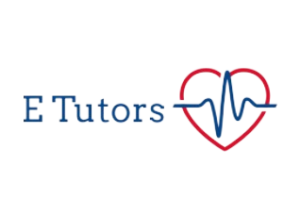Collaboration and Leadership Reflection Video
Name: Capella University
Course: Nurs-fpx 4010 assessment 1
April, 1st, 2023
Introduction
Hi Everyone, this video is about my collaboration and leadership reflection.
Today, I am going to explain and discuss a significant topic of “Interdisciplinary collaboration” which holds utmost importance in practical nursing field.
Let’s start by first having an overview of interdisciplinary collaboration and what’s required for it.
Reflection and Evaluation of Interdisciplinary Collaboration
in Healthcare Setting
Healthcare setting contains complex set of events which can only be solved and simplified with the collaboration among all the practitioners and workers.
There are numerous events happening simultaneously at a hospital which needs dire attention and input of all medical staff (doctors, practitioners, paramedical staff or nurses specially).
Interdisciplinary collaboration is a form of effective communication in which all the healthcare staff or workers work together along with patient for a best outcomes desired at a particular time (Ma et al., 2018). Healthcare setting needs intense and strong teamwork among its all components.
Interdisciplinary collaboration is not only beneficial for the patient but also it improves the work efficiency of the healthcare providers by reducing their workload, increasing the production overall, effective time management and patient satisfaction (Peltonen et al., 2019).
Like a sports team healthcare settings also require teamwork which is only possible through interdisciplinary collaboration. Every member or healthcare provider identifies a unique role to make treatment successful. Individual efforts are appreciated in it but the greater focus is on teamwork.
Each member of the team develops his skills over time to develop confidence and trust which helps them to work with their patients more collaboratively.
Besides the positive outcomes, there are many challenges or problems which appear often.
These challenges require commitment and determination to be successful as a team.
Some examples of challenges are staff shortages and complex and critical patients. Interdisciplinary collaboration rules out any sort of difference e.g. color creed, race, or nationality.
It ensures that humanity remains in the utmost spirit while working in a single unit. Different strategies of interdisciplinary collaboration apply to different sets of events.
At a particular moment or in a critical condition, all the healthcare providers need to decide unitedly with which strategy they want to proceed with the patient.
The best applicable strategy to that particular scenario and team is chosen.
For interdisciplinary collaboration, there are tons of existing competency frameworks, that are widely accepted and adapted as a collection of individual competencies that explain the knowledge, skills, and characteristics of healthcare professionals (HCPs).
Different healthcare organizations have fixed several interdisciplinary collaboration frameworks as a practicing standard and knowledge support for healthcare workers.
These frameworks are also been used as performance indicators based on which HCPs collaborate and practice (McLaney et al., 2022).
Background and Scenario
On one fine morning, there were shouts and a crowd of people running toward the delivery room.
The patient was a pregnant lady who was 45 years old having a history of stillbirths. She was a patient of an expert gynecologist, who did not have her duty in the morning.
The patient was rushed to the delivery room where the other gynecologists, a professional midwife, a nurse, an anesthetist, and an obstetrician.
I was working as a nurse for that patient in delivery room. My work responsibility was to monitor the patient’s state continuously and help the gynecologist. The lady was having pre-term labor.
When her file was examined critically it was noticed that she had a history of gestation diabetes, anemia, and breach birth positions. Baby this time was in a cephalic position but the problem that emerged was, should the doctors go for normal delivery or a C-section? the gynecologist got confused because she was new in that hospital and was a new practitioner. The woman was insisting on a normal delivery because she was afraid of the pain and loss of her previous babies because of C-sections.
The healthcare provider for confused because she was not in a position to give birth normally. the first challenge was to make her understand that she would be alright after a C-section.
The risk which existed for the normal delivery was as the patient was anemic and suffering from hypertension, so her post-condition would be unpredictable. Moreover, healthcare providers present at that particular time were confused about opting between two options as the patient was having pains for the normal delivery but she was not in the state of handling that.
In such a situation, the midwife suggested that they all should go for a c-section as the patient has a previous history of stillbirths and normal delivery can exert an excessive strain on the baby’s state.
The nurse and anesthetist also agreed upon it.
Gynecologist was monitoring the heartbeat of the baby continuously which has started to drop. All the healthcare providers concluded that a c-section is the only effective and safe option for this lady.
The obstetrician made the woman understand politely that “it’s all about your baby. You need to be strong for her.” The woman understood it and agreed to a c-section. All of them were extremely careful during the operation because the patient was aged and the baby was at high risk of death. After an operation of one hour, a healthy baby boy was delivered with normal organ functionalities.
The mother also regained her consciousness after one hour and when she saw her baby for the first time, all the pain vanished.
The healthcare providers were also very happy with their success. Their timely monitoring, management, and strong teamwork delivered the baby safely to the world.
Identification of the Issue
It is evident from the above incident that unity and collaboration are the most needed thing among healthcare workers to have the best medical outcomes. In this situation, the interdisciplinary collaboration worked the most as there were different healthcare workers from different departments were present. Other than collaboration, time management, past knowledge, and efficient monitoring worked the most for saving the life of the patient.
In this particular healthcare scenario, the interdisciplinary frameworks which were used were shared decision-making and an evidence-based interdisciplinary approach.
In shared decision-making, all the interdisciplinary workers in the healthcare setting worked and decided collaboratively on the patient’s condition.
The team decides who will be making the final decisions and holds it accountable (Légaré et al., 2018).
In an evidence-based interdisciplinary approach, the collaboration and communication between the healthcare workers for having the best a positive outcome for the patient. In this approach, the knowledge and skills are shared among different disciplines and areas of the healthcare setting (Tobi & Kampen, 2017).
The particular reason for supporting these approaches is that the patient’s condition was in an extreme emergency, it was about two lives i.e. mother and the baby. So, the best approach for this would be timely decision-making based on the knowledge and skill set of the workers.
The midwife based on her previous knowledge and experience suggested the approach which was approved by a gynecologist and acted upon immediately.
During this entire scenario, teamwork, effective communication, and critical handling were required which helped in bringing a positive outcome for the patient. Moreover, trust and confidence worked most for the collaborative efforts of the team.
Role of Poor Management in Inefficient Human and Financial Resources
This particular incident tells us that collaboration, communication, and previous knowledge are extremely important in dealing with a healthcare emergency. In case of any incompetency, miss communication, or Poor management could result in the patient’s or the baby’s death (Smith, 2021).
If there was a lack of effective communication between the team, it could result in poor time management and confusion in the final decision. Every healthcare emergency requires critical decision-making, proper analysis, and timely action. If any of these things are neglected, it can strongly endanger the life of the patient which is surely a loss of human and financial resources.
In this particular scenario, the midwife’s suggestion was acted upon. It shows that there exists no difference between the healthcare workers based on their hierarchy or job.
The gynecologist analyzed the suggestion and immediately other team members started acting accordingly.
If miscommunication or quarrels existed between the workers it would be a failure as a team. Trust is one of the important and much-needed elements for the team’s success Miscommunication can lead to negative outcomes like patient dissatisfaction, poor outcome, and loss of resources (Tiwary et al., 2019)
Best-practice Leadership Strategies
Leadership refers to the distinctive capability to manage a team and make it successful.
Healthcare leadership has taken a new and innovative shape nowadays. Clinical leadership is a new term in healthcare setting which is the most beneficial evidence-based practice which improves patient’s outcomes through collaborative teamwork (Barr & Dowding, 2022).
It not only involves managing the team but also dealing with the staff, bringing up elite knowledgable skills, and managing resources efficiently. In modern care, healthcare leadership is extremely important. American Psychological Association (APA) has identified seven crucial leadership strategies which are very necessary for a healthcare setting (Domínguez et al., 2020).
These strategies are timely decision-making, stress management, acceptability of feedback, consistent communication, trust building with experience and knowledge, commitment, and information sharing. Leadership can make a team successful in achieving a goal.
Collaborative leadership is one of the best strategies which enhance the collaboration and synergistic work between all the team members (Smith et al., 2018). The above scenario has confirmed that team collaboration, equal participation, stress management, and timely decision-making of the leader made the case successful.
A leader can motivate his members to work collectively for achieving a common goal.
Without encouragement and inclusion, leadership in the healthcare setting would fail.
The responsibility of a best leader in healthcare setting is to narrow the communication gap between different team members (Nicola et al., 2020).
Conflict can be a halting force in providing the best healthcare service and miscommunication can one of the reasons behind it. A considerate leader can resolve these issues by giving equal respect to everyone’s opinion and have an appropriate approach for achieving positive outcomes.
Best-practice Interdisciplinary Collaboration Strategies
Modern healthcare inculcates a dynamic set of teams from different disciplines for increasing positive outcomes and success.
It supports innovation, effective work, collaborative effort, and the best outcome for a healthcare problem.
There are four pillars of best interdisciplinary collaboration.
These four pillars are strategies are building trust and confidence teamwork communication, Implementation designs, and transparency. Without the help of prerequisites and interdisciplinary collaboration cannot work efficiently (Morley & Cashell, 2017).
In the above situation, the healthcare providers were new to each other but due to trust, immediate implementation, and transparency, they were able to deliver the baby successfully.
If the team wouldn’t agree on one suggestion they would be a huge loss of two lives. However, challenges remain in the way of achieving the team’s success. the challenge which existed in this particular situation was the patient’s this agreement on c-section. This situation was also dealt with patience and unity as the obstetrician politely conveyed each risk to the patient which was understood by her immediately.
One of the most effective and primary approach to deal with a healthcare emergency is PDSA i.e. “Plan, Do, Study, Act”. PDSA approach is used to improve the healthcare quality (Prybutok, 2018). In the above scenario of childbirth, the entire team planned the decision of going for a normal delivery or c-section.
All team members were equally contributing in suggesting the best option for the respective patient.
They thoroughly studied the sequence of events and eventually came to a final decision. At that moment, timely leadership and decision making of the gynecologist brought forth positive outcomes.
Therefore, collaborative planning, study and action is a primary strategy required for dealing with healthcare emergencies.
Other than team collaboration, expert training, knowledge, skill development, and perpetual professional progress are important strategies to have a high-quality interdisciplinary collaboration .
These will ensure better patient safety, lower mortality rates, safety, and decreased errors in a healthcare setting.
Conclusion
Interdisciplinary collaboration is an effective tool of communication between healthcare professionals from different professions coordinate for best patient outcome. There are number of strategies which can make inter-professional collaboration successful. These strategies work at the team level as well as require elite leadership approach. Other than collaboration, interdisciplinary collaboration also aims at reducing errors, providing high-quality healthcare services and utmost patient satisfaction.
References
Barr, J., & Dowding, L. (2022). Leadership in Health Care. In Google Books. SAGE Publications. https://books.google.com.pk/books?hl=en&lr=&id=Sx1tEAAAQBAJ&oi=fnd&pg=PP1&dq=best+leadership+in+healthcare&ots=ErvhJPFQG6&sig=DB7wkwoqQntD3EPcuRaQEA-yPxg&redir_esc=y#v=onepage&q=best%20leadership%20in%20healthcare&f=false
Domínguez, D. G., García, D., Martínez, D. A., & Hernandez-Arriaga, B. (2020). Leveraging The Power Of Mutual Aid, Coalitions, Leadership, And Advocacy During COVID-19. American Psychologist, 75(7), 909–918. https://doi.org/10.1037/amp0000693
Légaré, F., Adekpedjou, R., Stacey, D., Turcotte, S., Kryworuchko, J., Graham, I. D., Lyddiatt, A., Politi, M. C., Thomson, R., Elwyn, G., & Donner-Banzhoff, N. (2018). Interventions For Increasing The Use Of Shared Decision Making By Healthcare Professionals. Cochrane Database of Systematic Reviews, 7(7). https://doi.org/10.1002/14651858.cd006732.pub4
Ma, C., Park, S. H., & Shang, J. (2018). Inter- And Intra-Disciplinary Collaboration And Patient Safety Outcomes In U.S. Acute Care Hospital Units: A Cross-Sectional Study. International Journal of Nursing Studies, 85(1), 1–6. https://doi.org/10.1016/j.ijnurstu.2018.05.001
McLaney, E., Morassaei, S., Hughes, L., Davies, R., Campbell, M., & Di Prospero, L. (2022). A Framework For Interprofessional Team Collaboration In A Hospital Setting: Advancing Team Competencies And Behaviours. Healthcare Management Forum, 35(2), 084047042110635. https://doi.org/10.1177/08404704211063584
Morley, L., & Cashell, A. (2017). Collaboration in Health Care. Journal of Medical Imaging and Radiation Sciences, 48(2), 207–216. https://doi.org/10.1016/j.jmir.2017.02.071
Nicola, M., Sohrabi, C., Mathew, G., Kerwan, A., Al-Jabir, A., Griffin, M., Agha, M., & Agha, R. (2020). Health Policy and Leadership Models During the COVID-19 Pandemic- Review Article. International Journal of Surgery, 81(81), 122–129. https://doi.org/10.1016/j.ijsu.2020.07.026
Peltonen, J., Leino-Kilpi, H., Heikkilä, H., Rautava, P., Tuomela, K., Siekkinen, M., Sulosaari, V., & Stolt, M. (2019). Instruments Measuring Interprofessional Collaboration In Healthcare – A Scoping Review. Journal of Interprofessional Care, 34(2), 1–15. https://doi.org/10.1080/13561820.2019.1637336
Prybutok, G. L. (2018). Ninety To Nothing: A PDSA Quality Improvement Project. International Journal of Health Care Quality Assurance, 31(4), 361–372. https://doi.org/10.1108/ijhcqa-06-2017-0093
Smith, J. (2021). Analysis of Healthcare Miscommunication and How to Effectively Improve Communication Outcomes: An Integrative Review. Doctoral Dissertations and Projects. https://digitalcommons.liberty.edu/doctoral/2865
Smith, T., Fowler-Davis, S., Nancarrow, S., Ariss, S. M. B., & Enderby, P. (2018). Leadership In Interprofessional Health And Social Care Teams: A Literature Review. Leadership in Health Services, 31(4), 452–467. https://doi.org/10.1108/lhs-06-2016-0026
Tiwary, A., Rimal, A., Paudyal, B., Sigdel, K. R., & Basnyat, B. (2019). Poor Communication By Health Care Professionals May Lead To Life-Threatening Complications: Examples From Two Case Reports. Wellcome Open Research, 4(1). https://doi.org/10.12688/wellcomeopenres.15042.1
Tobi, H., & Kampen, J. K. (2017). Research Design: The Methodology For Interdisciplinary Research framework. Quality & Quantity, 52(3), 1209–1225. springer. https://doi.org/10.1007/s11135-017-0513-8



















